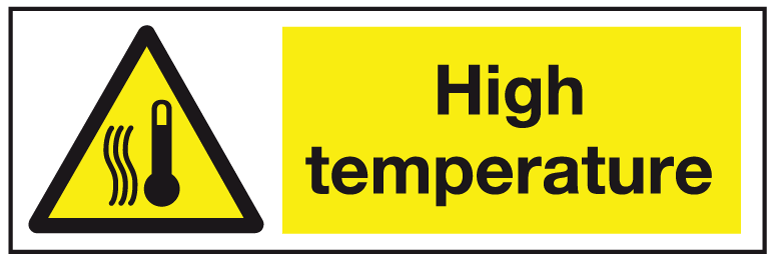What are the effects of heat stress?
Heat stress can affect individuals in different ways, and some people are more susceptible to it than others.
Typical symptoms are:
- an inability to concentrate
- muscle cramps
- heat rash
- severe thirst – a late symptom of heat stress
- fainting
- heat exhaustion – fatigue, giddiness, nausea, headache, moist skin
- heat stroke – hot dry skin, confusion, convulsions and eventual loss of consciousness. (This is the most severe disorder and can result in death if not detected at an early stage)
What do I need to do about heat stress?
Over time people adapt to hot conditions by sweating more, and by changing their behaviour to try and cool down, e.g. removing clothing, taking cool drinks, fanning themselves, sitting in the shade or a cool area, and/or reducing their work rate. However, in many work situations such behavioural changes may not be possible, e.g. during asbestos removal.
Where there is a possibility of heat stress occurring you will need to carry out a risk assessment. Controlling the risks in the workplace provides advice on how to carry out a risk assessment. For specific advice on how to record the findings of your heat stress risk assessment and identifying the heat stress risks you need to control use the heat stress checklist and/or contact your health and safety advisor at C&C Consulting Services Ltd.
How can I reduce the risks?
Remove or reduce the sources of heat where possible:
Control the temperature
Control the temperature using engineering solutions e.g:
- change the processes
- use fans or air conditioning
- use physical barriers that reduce exposure to radiant heat
Provide mechanical aids
Provide mechanical aids where possible to reduce the work rate. Regulate the length of exposure to hot environments by:
- allowing employees to enter only when the temperature is below a set level or at cooler times of the day
- issuing permits to work that specify how long your employees should work in situations where there is a risk
- providing periodic rest breaks and rest facilities in cooler conditions
Prevent dehydration
Working in a hot environment causes sweating which helps keep people cool but means losing vital water that must be replaced. Provide cool water in the workplace and encourage workers to drink it frequently in small amounts before, during (this is not possible in some situations e.g. respiratory protective equipment use or asbestos removal) and after working.
Provide personal protective equipment
Specialised personal protective clothing is available which incorporates, for example, personal cooling systems or breathable fabrics.
This may help protect workers in certain hot environments. Protective clothing or respiratory protective equipment is often provided to protect from a hazard at work e.g. asbestos. This type of equipment, while protecting the employee from this hazard may expose the employee to heat stress.
Training
Provide training for your workers, especially new and young employees telling them about the risks of heat stress associated with their work, what symptoms to look out for, safe working practices and emergency procedures.
Acclimatisation
Allow workers to acclimatise to their environment and identify which workers are acclimatised/assessed as fit to work in hot conditions.
Identify who is at risk
Identify employees who are more susceptible to heat stress either because of an illness/condition or medication that may encourage the early onset of heat stress, e.g. those with heart conditions.
Advice may be needed from an occupational health professional or medical practitioner. Your risk assessment should already address risks to pregnant employees, but you may choose to review it when an employee tells you she is pregnant, to help you decide if you need to do any more to control the risks.
Monitor health
Monitor the health of workers at risk. Where it is considered that a residual risk remains after implementing as many control measures as practicable, you may need to monitor the health of workers exposed to the risk. You should then seek advice from occupational health professionals with a good working knowledge of the risks associated with working in heat stress situations.











